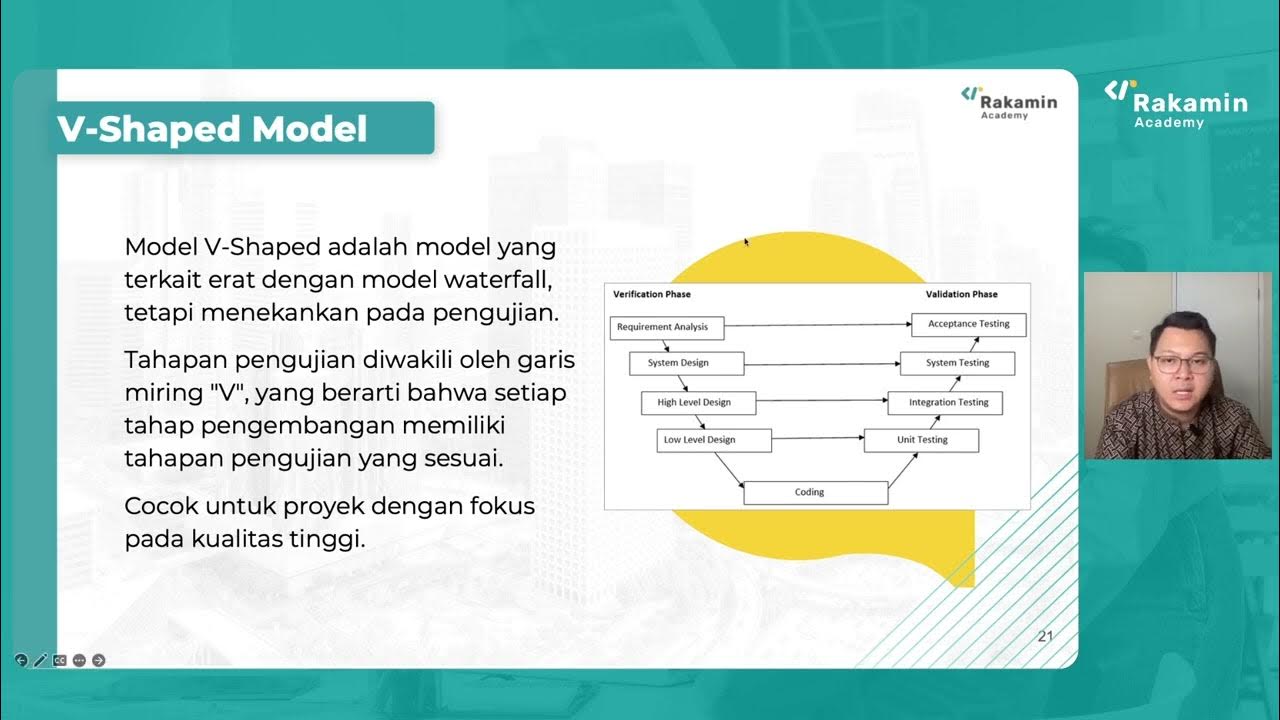Sub Topic 3
Summary
TLDRIn this informative presentation, Rizki Fadilah explores the implementation of Design Thinking within the Software Development Life Cycle (SDLC). The session emphasizes understanding user needs through empathizing, defining clear problem statements, and generating creative solutions. It details the iterative process of prototyping and testing, encouraging collaboration among stakeholders to ensure that the final product aligns with user expectations. By applying Design Thinking principles, teams can create more intuitive and user-centric software solutions that adapt to evolving market demands, ultimately achieving business goals.
Takeaways
- 😀 Understanding the concept of Design Thinking is essential for effective implementation in software development.
- 🔍 The first step in Design Thinking is to empathize with users by conducting research, interviews, and surveys to gather insights into their needs.
- 📝 A clear problem statement should be defined from the user's perspective, avoiding a developer-centric viewpoint.
- 💡 Ideation involves brainstorming creative solutions and generating a variety of potential ideas.
- 📐 Prototyping includes creating low-fidelity sketches and high-fidelity interactive models to represent chosen ideas.
- 🔄 Testing gathers feedback from real users, which is crucial for iterating on designs and improving usability.
- 🤝 Collaboration with stakeholders is vital to ensure everyone is aligned with the project goals and user needs.
- 📊 Empathy Mapping is a valuable tool for visualizing user attitudes and feelings during the design process.
- 👤 Developing user personas helps designers focus on the specific needs of different user groups.
- 🔧 The implementation of Design Thinking fosters the creation of user-oriented software products that meet both user needs and business objectives.
Q & A
What is the primary objective of the session discussed in the video?
-The primary objective is to understand the concept of design thinking implementation.
What are the main steps in the design thinking process outlined in the video?
-The main steps are: 1) Empathize, 2) Define the problem, 3) Ideate, 4) Prototype, 5) Test, and 6) Implement.
Why is empathy important in the design thinking process?
-Empathy is crucial because it helps designers deeply understand user needs, wants, and the problems they face.
What methods can be used to gather data about user needs?
-User research methods include interviews, observations, and surveys to collect qualitative and quantitative data.
What is an empathy map, and what purpose does it serve?
-An empathy map is a visual tool that represents users' attitudes, thoughts, feelings, and problems, helping teams understand user perspectives.
What is the significance of defining a problem statement from the user's perspective?
-Defining a problem statement from the user's perspective ensures that the development team focuses on solving the right problems rather than those perceived by developers.
How do brainstorming sessions contribute to the ideation phase?
-Brainstorming encourages creative thinking and collaboration, generating a variety of potential solutions for consideration.
What are low-fidelity and high-fidelity prototypes, and how do they differ?
-Low-fidelity prototypes are basic representations, often sketched on paper, while high-fidelity prototypes are detailed and closely resemble the final product.
What role does user feedback play in the testing phase of design thinking?
-User feedback is essential for validating solutions, identifying usability issues, and guiding iterations to improve the design.
What is the overall benefit of implementing design thinking in software development?
-Implementing design thinking allows development teams to create user-centered software that adapts to changing user needs and market dynamics, leading to successful products.
Outlines

This section is available to paid users only. Please upgrade to access this part.
Upgrade NowMindmap

This section is available to paid users only. Please upgrade to access this part.
Upgrade NowKeywords

This section is available to paid users only. Please upgrade to access this part.
Upgrade NowHighlights

This section is available to paid users only. Please upgrade to access this part.
Upgrade NowTranscripts

This section is available to paid users only. Please upgrade to access this part.
Upgrade Now5.0 / 5 (0 votes)





